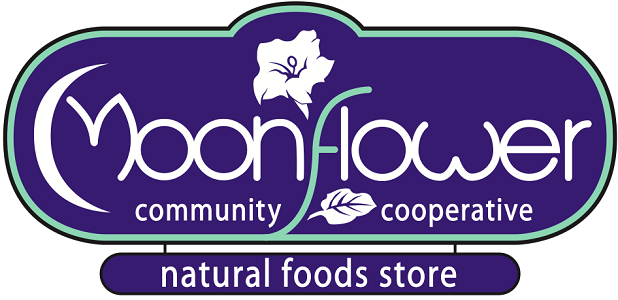During an interview at the end of April 2018, Mitchell May, the founder of Synergy, eloquently recounted the series of events which led to his founding of the first organic dietary supplement company. He reminisced about the predecessor of Moonflower Co-op in the 1980s and took me on a journey through his life, from his formative childhood experiences in Los Angeles to his transformative recovery from a traumatic accident in Tennessee.
May developed a keen understanding of community health and wellness during his childhood in Los Angeles. Through his relationships with the children of Chicano migrant farm workers, he understood that marginalized communities could not achieve full health and wellness as a result of their proximity to chemical exposures from industrial agriculture. May wondered why many of his peers regularly appeared sick. He realized that many of these children lived in dilapidated housing conditions and faced the impacts of using water from clearly contaminated sources. May was shocked by his observations, yet, at that time in Los Angeles, few community resources existed, especially related to environmental health. He grew up with a sense of the importance of community wellness, environmental justice, and safe living conditions.
The 1960s encouraged deeply critical perspectives on the current economic and political systems, which resonated with May. He ultimately traveled to Tennessee in 1969 to join one of the country’s first intentional communities known as The Farm, where he homesteaded and learned from the Amish about organic agricultural practices. Still active today, The Farm facilitated cooperative ways of living and offered him a profound experience. In 1972, May endured a traumatic car accident during a trip with some friends to a bluegrass concert in Tennessee. Miraculously, May survived a direct impact resulting in over 40 compound fractures and a grim prognosis from physicians who recommended amputating both legs.
May, restricted by a full body cast, endured a year of intensive care in his home state of California. He eventually underwent an alternative healing treatment at the University of California Los Angeles (UCLA), combining aspects of Western medicine and alternative healing practices. UCLA Medical Center’s parapsychology lab facilitated May’s healing process, including the regeneration of nerve, bone, and organ tissue. This alternative healing approach successfully restored May’s hearing and vision, which he lost as a result of the accident. Led by Jack Gray, this lab studied a variety of paranormal phenomena as well as practices of traditional healing from around the world. May slowly but fully recovered, defying his original prognosis, and apprenticed under Jack Gray for seven years to study how worldwide cultures achieve wellness. As part of a unique 7 year research project at UCLA Medical Center, May interviewed a diverse range of healers from different cultural backgrounds, while simultaneously attending graduate school and diving deeper into the world of healing.
After Jack Gray’s death, May continued to research the healing traditions, herbs, plants, and foods valued by various cultures. He worked with numerous patients around the world over several years with conditions deemed incurable by Western medicine and helped support the same type of healing process that he experienced himself. May’s deep interest in the power of alternative, preventative medicine propelled him into the field of scientific research with a goal of integrating all of the information he received from his years of work and study with healers and his own results from helping others in their need for healing. Over the course of seven years, he developed the original Pure Synergy® formula. May embarked on a several year journey around the world to further understand these different cultural perspectives on healing and wellness.
In 1984, after traveling to various corners of the globe, May felt drawn to desert landscapes and decided to spend time in the Western United States. He traveled to Utah for the first time and landed in the Maze, the remote district of Canyonlands National Park. Inspired by the vastness, deafening silence, colors, and wild extremes of the desert environment, he explored the Maze for about a month before looking at a map and spontaneously deciding to visit the closest town of Moab. He initially encountered the predecessor of Moonflower Co-op. May admired the passion, talent, and fiery spirit of the people he met in Moab, including the late Conrad Sorenson. He acted upon a suggestion to explore Castle Valley and quickly settled there. His desire to practice principles of sustainability prompted him to construct one of the first solar panel systems in the region, develop rainwater catchments, and adopt permaculture methods.
May began to understand the impact of the mining industry’s boom/bust cycle in Moab. Vanadium mining began near Cisco in 1912, and by the end of World War II, the southeastern Utah region faced extraction of uranium, potash, manganese, oil, and natural gas. Due to the politics of the Cold War, increasing interest in the development of nuclear energy, and a major discovery of vast uranium deposits along the Colorado Plateau region in 1952, uranium mining exploded in Moab by the early 1950s. Fueled by national Uranium Fever and false perceptions about the profitability of uranium mining, thousands of prospectors flocked to Moab. By 1964, the largest uranium mine closed, leaving hundreds of miners without work and effectively ending Moab’s uranium boom. Moab residents viewed tourism as a viable solution to the town’s economic woes. With the completion of I-70 in the 1970s, tourists could easily travel to Moab from urban centers around the country.
After observing tensions around development and economic sustainability in the community, Mitchell saw the desperate need for year-round, sustainable industries devoid of damaging boom and bust cycles and seasonal tourism. Over the years, many people expressed interest in his Pure Synergy® formula, and he wondered if he could start a company to manufacture this product while simultaneously providing stability and economic uplift for the community.
He decided to start Synergy in 1991, focusing on the original Pure Synergy® formula he developed at UCLA. The valuable relationships he built during his time at UCLA paid off, allowing him to fund the initial development of the company without any outside investors. Originally, he contracted out the manufacturing to facilities in Salt Lake City, and through resourcefulness, perseverance, and the generosity of his supporters, Synergy eventually constructed a production facility in Moab.
While Mitchell admits that housing Synergy’s facilities in a large metropolitan area such as Salt Lake City or Denver would increase the ease of operations, however Synergy was “born” in Moab, and will remain in Moab due to the importance and May’s commitment to economic diversification and stability in the area. The original Pure Synergy® formula has not changed at all, and the company continues to develop additional innovative formulas, adding to their current selection of 35 products by 4 or 5 products per year. They all utilize their unique, high-quality, organic, and ethically sourced ingredients. Synergy products are distributed worldwide to over 50 countries, but Moonflower Co-op fortunately offers special prices that makes Synergy products more affordable and accessible exclusively to Moab community members. Synergy prioritizes support for the surrounding communities by providing grant funding to local non-profit organizations and financial stability for 70 full-time employees.
May’s inspirational story of spiritual and physical endurance and dedication to understanding holistic wellness continues to inspire those around him. The Synergy Company represents a culmination of years of thorough research and deeply informative personal experiences. For more information about May’s story and Synergy products, visit www.thesynergycompany.com.

